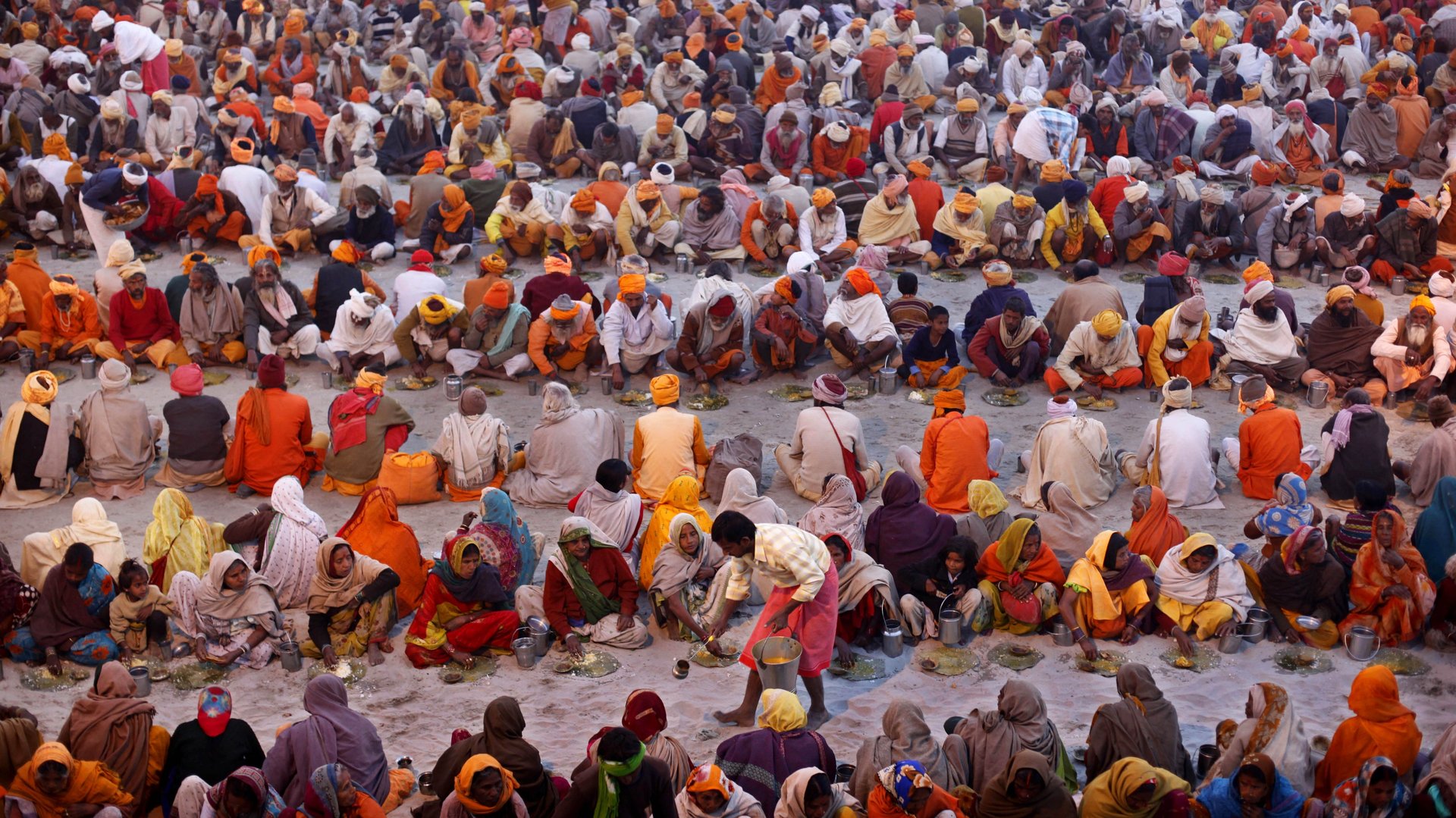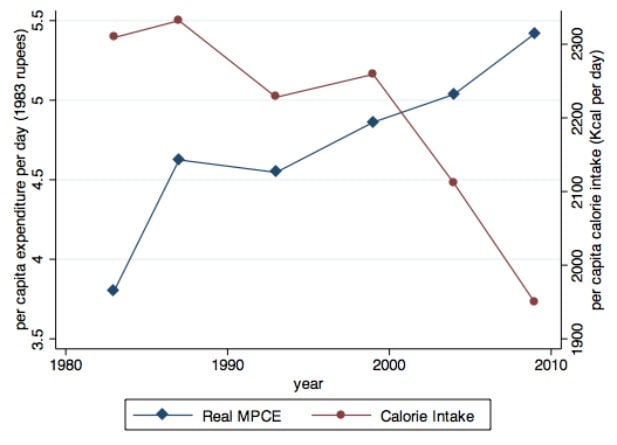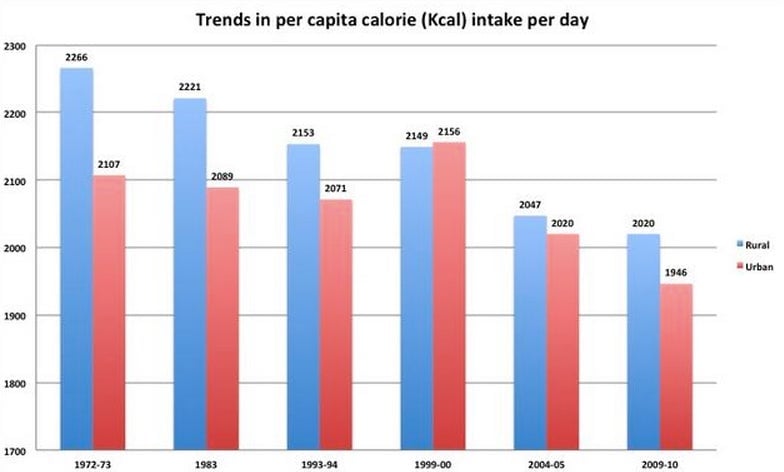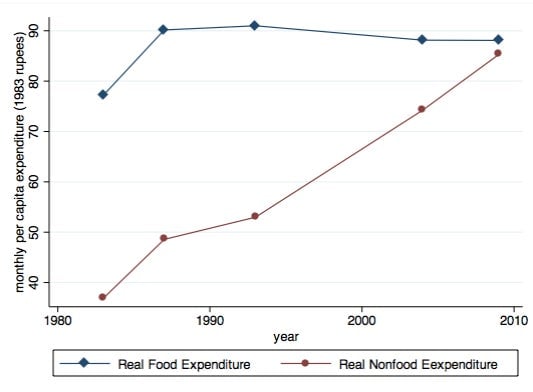India is surviving on less food than it did four decades ago
After a decade of breakneck economic growth, Indians are consuming fewer calories on average today than they were in the 1970s. Economic development scientists call it India’s calorie consumption puzzle, and it has been around for a while.


After a decade of breakneck economic growth, Indians are consuming fewer calories on average today than they were in the 1970s. Economic development scientists call it India’s calorie consumption puzzle, and it has been around for a while.
Even as incomes have increased over the past four decades, per capita caloric intake has been falling:

A few possible explanations have been floated. One is that people are absorbing calories better because of cleaner water and other epidemiological improvements, thus less food and fewer calories are needed. Fewer workers are toiling in labor intensive industries like agriculture and moving to cities. Another hypothesis is that people are eating more expensive food, which encourages them to spend less, lowering overall caloric intake.
This is how India’s per capita calorie consumption has looked over the past several decades:

The most plausible explanation, argue economists Deepankar Basuy and Amit Basole from the University of Massachusetts, is that people’s budgets are being squeezed.
In a study (pdf) released in March that analyzes rural calorie consumption in relation to household spending in 74 areas, they conclude that rural Indians are devoting more of their budgets to things like rent, healthcare, and schooling. The trend also holds true for urban residents. Meanwhile, real food budgets, have been stagnant since the 1980s:

Yet, this isn’t an entirely voluntary decision to spend less on food and more on other expenses, the authors argue. Indians are shelling out more money to pay for services because they cost more and because the government is providing less of them. They write:
The food budget squeeze could be driven by both demand and supply side factors. Increased demand for formal schooling, consumer services, transportation, and institutional health care on the demand side, and a retreat of State from provisioning these services on the supply side, could interact to effect a squeeze on the food budget.
This hits India’s poorer residents hardest. The majority of rural Indians are consuming well below 2,400 kilocalories a day, the bar for rural poverty.
“The situation for poor Indians has surely worsened since the 1990s,” writes Ranjit Goswami, dean at the Institute of Management Technology in Nagpur India. This, he argues, is the result of what he says is India’s growth for growth’s sake economic model. “India’s constitution, adopted back in 1949, declared India to be a sovereign, secular, democratic and socialist republic. But India’s economic reforms have been divorced from that socialistic mind frame.”